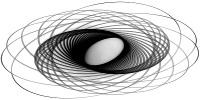January 2012 – December 2015. ITN INSIST: Integrating Numerical Simulation and Geometric Design Technology. Coordinator: Bauhaus University, Germany (T. Rabczuk, M. Tur) with Cardiff University, UK (S. Bordas, P. Kerfriden, F. C. Langbein, R. R. Martin), Johannes Kepler University Linz, Austria (B. Jüttler), Universitat Politecnica de Valencia, Spain (J. J. R. García), Carnegie Melon, USA (Y. Zhang), UCSD, USA (Yuri Bazilevs), Cenaero (O. Pierard, N. Poletz), Simpleware (P. Young), inuTech GmbH, Germany (F. Vogel), Transcendata (G. Butlin), Numerical Geometry (M. Sabin). FP7-PEOPLE-2011-ITN, Marie-Curie Action: Initial Training Networks, ref 289361. EUR 3,839,831.

ITN INSIST Objectives
The objective of the ITN INSIST is to develop the next generation methods integrating numerical simulation and geometric design technology. Currently, geometric design and simulation is based on different geometry representation hampering the effective design of Engineering structures, materials and components. Isogeometric analysis developed recently tries to remove those drawbacks by integrating CAD shape functions, in particular NURBS, in numerical analysis.
On the other hand, not all design models are based on CAD designs. In many applications, the geometric description is obtained from other data, e.g. CT-scans or surface models or point clouds generated by laser scanners, e.g. from clays models for automotive design. A classical application is reverse engineering, material characterization or computer supported materials design. The automatic image segmentation of CT-scans and the subsequent creation of the “design model” is far from simple. Voxel-based finite element analysis is commonly used in such applications
The analysis of an engineering object based on the simulation of some physical system usually requires the generation of a computational basis for a partial differential equation. Typically this discretization is based on a geometric mesh model or a set of nodes which determines local basis elements. The properties of these basis elements in relation to the partial differential equation are crucial to obtain good analysis results. Depending on the system simulated, different types of basis elements are required.
In this ITN, we aim to provide a general framework of unifying pre-processing/design in general with numerical analysis. The framework will be applied to the most common and popular methods employed in pre-processing.design and analysis, i.e. spline-based basis functions (NURBS, T-splines, etc.), voxel-based finite elements, polynomial (standard) and spline-based finite elements and extended finite element and meshfree methods.
CAD Feature Processing
We develop a declarative language to specify the features of CAD models for use in discretization and model simplification. We also look at specific feature declarations aimed at simplifying models for specific PDEs.
Pre-processing and Meshing
We explore techniques for the creation of NURBS volume parametrizations and generalizations thereof, providing local adaptivity. We develop a meshing software for surface models which can be coupled to existing finite element mesh generators, as well as pre-processing software for data obtained by point clouds. Moreover, we develop a level-set representation of CT-scan based objects.
Numerical Analysis / CAE
We develop a 3D generalized Isogeometric Analysis formulation based on CAD-shape functions. Also we study hybrid methods that exploit the advantages of Isogeometric Analysis and standard finite elements. Moreover, we explore meshless methods based on structured and unstructured discretizations and 3D XFEM formulations based on level-set functions that describe the boundary of the domain. Finally, we develop adaptive refinement algorithms and model reduction techniques.
Voxel
We develop methods that exploit the voxel-based geometry data in the context of numerical analysis. Voxel based discretization methods can be efficiently combined with matrix free storage and iterative solver techniques. Applying these techniques, simulation models with several millions of degrees of freedom can be studied on standard hardware. Unsolved problems which will be addressed are parallelization methods with optimal load balancing and hybrid solver techniques using CPUs and GPUs.
![]() This work is licensed under a Creative Commons Attribution-NonCommercial-ShareAlike 4.0 International License.
This work is licensed under a Creative Commons Attribution-NonCommercial-ShareAlike 4.0 International License.
